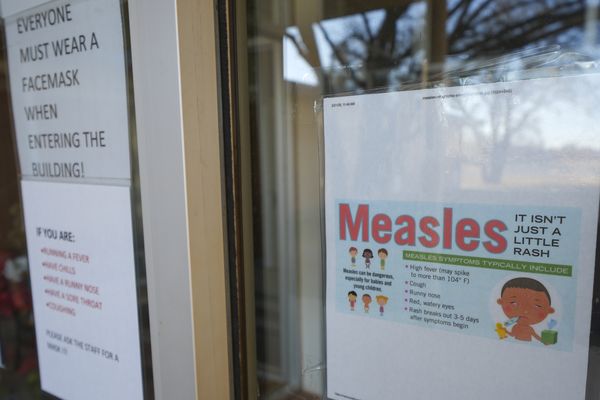The F-16s that NATO allies may send to Ukraine aren’t likely to arrive in time to help with Kyiv’s current offensive. The used planes won’t be enough to turn the tide in the air war against Russia, either. The alliance has a different message in mind.
By providing some of the most sophisticated and expensive weapons to date, Kyiv’s backers will tie Ukraine’s military more closely than ever to the bloc, showing Vladimir Putin he’s wrong to think he can outlast them in the conflict.
It’s a potentially risky approach. While allies have managed to reduce the upfront expense by offering planes from its members’ existing fleets, keeping those aging F-16s in the air may cost hundreds of millions of dollars a year - just as pressure is growing in Europe and the US over the rising bill for continued support of Ukraine.
“The big takeaway here is that flying a limited fleet of antiquated aircraft — through contractors and maintaining them with contractors — is going to be really freaking expensive,” said Brynn Tannehill of the Rand Corp. in Washington. “It bolsters the message that the long-term goal is to integrate Ukraine into NATO.”
Alliance officials won’t say when the planes might be delivered. But the Netherlands and Denmark are planning to set up a training center in Eastern Europe for pilots and repair personnel, including from Ukraine.
“Then you have a sustainable solution because every pilot needs to continue training,” Dutch Defense Minister Kajsa Ollongren told reporters Thursday. “Of course we’re talking not only about pilots, also all the technical personnel you need for maintenance of the aircraft.”
While he’s welcomed the prospect of getting the planes, Ukrainian President Volodymyr Zelenskyy is hoping for stronger commitments from the alliance at its summit in July in Vilnius, Lithuania. So far, NATO members are divided on just how far to go in promising Kyiv a clear path to membership or providing other long-term guarantees of its security. But the alliance is pushing members to commit to contribute 500 million euros annually to modernize its military and tighten ties with NATO for years to come.
Of course, sustaining the F-16s and other sophisticated weapons and paying for missiles and other ordnance to keep them shooting is likely to be far more expensive. The older planes that NATO allies could send will cost less up front, but also have a shorter useful life because they’ve already been flying for decades in some cases.
Since the start of the war, the US has provided more than $40 billion in security aid for Ukraine, but skepticism is growing in Congress over how long that can be sustained.
“When you start going down this road, you are talking about a much longer-term security assistance package,” said Seth Jones of the Center for Strategic and International Studies, a Washington think tank. “The logistics tail for an F-16 is just infinitely larger than it is for a Stinger or a Javelin,” he said, referring to the portable anti-aircraft and antitank missiles that dominated alliance supplies to Ukraine early in the war.
Just flying older F-16s such as those Ukraine is likely to receive as NATO members get new fighters costs as much as $32,000 per hour, according to the Defense Department. Overall, maintaining the jets could cost as much as buying them, General Mark Milley, Chairman of the Joint Chiefs of Staff, said on May 25.
“Sometimes certain things get labeled as, you know, ‘This is going to be the magic weapon,’” he said. “There are no magic weapons — and F-16’s not, and neither is anything else.”
Russia’s advanced fighters, including the MiG-31 and Su-35, have an advantage over Ukraine’s current jets, they also have more advanced radars and longer-range air-to-air missiles that might allow them to shoot down older F-16s before trained Ukrainian pilots would even be able to see them, according to Rand’s Tannehill.
The Pentagon had long argued that maintaining and supporting F-16s would take a lot of work, but Tannehill argues that F-16s with the right weapons systems — such as Lockheed Martin’s joint air-to-surface standoff missile, or JASSM — could still help Ukraine given the worn-down state of its current Russian-built fighter aircraft.
“It’s going to be expensive, but if you give it the right weapons systems to go along with the airframe, it could provide substantial combat value,” she said, adding that the jets were a “a bridge to a post-war, NATO-integrated Ukraine.”
At the opening of a meeting of allies in Brussels Thursday, officials underlined that support for Kyiv is a long-term project.
Citing the F-16s, along with support for German-made Leopard tanks, US Defense Secretary Lloyd Austin said allies are committed to “ensure that Ukraine’s forces have the capabilities that they need to defend their country against Russian aggression in the future.”







